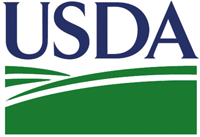 Today, the sixth annual W.T.O. Ministerial meeting gets underway in Hong Kong. On the agenda: The Doha Developmental round of trade negotiations.
Today, the sixth annual W.T.O. Ministerial meeting gets underway in Hong Kong. On the agenda: The Doha Developmental round of trade negotiations.
This is a good time to briefly discuss some of the technical issues associated with the talks, and what these specific rules could mean for future U.S. domestic farm policy.
Although it’s easy to speak generically about “farm subsidies,” it’s very important to remember that the W.T.O. classifies subsidies into three specific categories- or “boxes.” These boxes are labeled, “amber,” “blue,” and “green.”
The defining issue with respect to classifying subsidies into the proper box is whether or not a government payment is considered trade distorting.
If a subsidy is deemed to distort trade, or give producers an incentive to produce more than the market would otherwise warrant, it will be classified into the amber box. Amber box payments typically face the most stringent caps and are generally what commentators are referring to when talking about the W.T.O. reducing “farm subsidies.”
Unlike the amber box, green box payments are considered non-trade distorting and are generally not capped. (Blue box payments are considered to have a minimal impact on trade and fit in between the amber box and green box).
With this background in mind, talk of “reducing farm subsidies” must be viewed in the proper box context.
Although amber box payments have to be capped, and are viewed with a jaundiced eye at the W.T.O., there is nothing in W.T.O agreements that prevents domestic legislatures from moving money from one box to another.
In other words, the W.T.O. will likely not influence the total amount of U.S. government farm payments, but rather, could change the form of these payments from trade distorting amber box payments to non-trade distorting green box payments.
Coincidently, some “green box” W.T.O. payments are often the type of government outlays that are considered “green” from an agri-environmental perspective. Some observers have called these payments “doubly green.”
As a result, many farm policy observers see the 2007 Farm Bill as a chance to move payments from the amber box into non-trade distorting green box payments. Although the impacts of these differing forms of payments will have various economic implications, it is possible that even with a W.T.O. agreement, the total amount of U.S. farm payments may not be lowered as a result.
For more on box transfers and the 2007 Farm Bill, see this article by Alwyn Scott, which was published in Sunday’s Seattle Times.
Keith Good writes The FarmPolicy.com News Summary, an Email newsletter containing a summary of news relating to U.S. farm policy which is published most weekdays. For more information, go to www.FarmPolicy.com.

 I am very behind in posting the winner of the 6th annual Mid-Atlantic Taste of Elegance contest that was held in Baltimore, MD. The winner was James Matthew Wolff, executive chef at Innovative Gourmet Caterers, Owings Mills, Md.
I am very behind in posting the winner of the 6th annual Mid-Atlantic Taste of Elegance contest that was held in Baltimore, MD. The winner was James Matthew Wolff, executive chef at Innovative Gourmet Caterers, Owings Mills, Md. The
The  This image is all I got via email (a picture speaks a thousand words) but thankfully it has a website listed. It’s the
This image is all I got via email (a picture speaks a thousand words) but thankfully it has a website listed. It’s the  This is sort of related to agriculture. Have you ever wanted to start your own lawn care business? It’s how I made money in high school. I think I mowed about a gazillion yards. I think I wore out 3 or 4 lawn mowers in the process. This is actually about really making a business out of it and
This is sort of related to agriculture. Have you ever wanted to start your own lawn care business? It’s how I made money in high school. I think I mowed about a gazillion yards. I think I wore out 3 or 4 lawn mowers in the process. This is actually about really making a business out of it and 
 I wanted to go to Hong Kong but business is very, very busy and then there’s that bird flu thing . . . but Sara Wyant is there and she’s letting her subscribers to
I wanted to go to Hong Kong but business is very, very busy and then there’s that bird flu thing . . . but Sara Wyant is there and she’s letting her subscribers to  With today’s announcement about the opening up of the Japanese market to U. S. beef the
With today’s announcement about the opening up of the Japanese market to U. S. beef the  You’ll be hearing a lot about this today and over the next couple days so I thought I’d give you a heads up. The Japanese border is open to U. S. beef. That’s big news for our cattle producers.
You’ll be hearing a lot about this today and over the next couple days so I thought I’d give you a heads up. The Japanese border is open to U. S. beef. That’s big news for our cattle producers.  If you’re considering ZimmComm’s
If you’re considering ZimmComm’s 